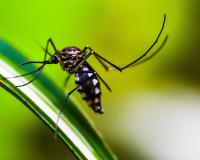
Vibrant Environment
Governance And Rule Of Law
All | Biodiversity | Climate Change and Sustainability | Environmental Justice | Governance and Rule of Law | Land Use and Natural Resources | Oceans and Coasts | Pollution Control

The coronavirus pandemic has focused increased attention on indoor air quality and ventilation. Yet, many people remain unaware of the health risks posed by an activity that occurs every day in their homes: cooking.

Part One of this blog series discussed interstate electricity transmission as an integral part of grid resilience through a California and Western EIM case study. Part Two builds on this background by evaluating the regulatory framework that underpins the division of transmission siting authority and analyzing its legal implications.

Last August, over half a million California residents simultaneously lost power during the state’s first rolling blackout in 20 years. Critics of renewable energy have pointed to California’s recent gains in wind and solar power penetration to argue that the large-scale outage suggests a correlation between increased variable renewable energy and increased grid vulnerabilities. Meanwhile, in an analysis released in January, CAISO, California’s energy market operator, attributed the large-scale outage to a climate change-induced heat wave, which led electricity demand to exceed existing resource adequacy. In the same report, CAISO proposes “consideration of transmission build out” to overcome transmission constraints across multiple interstate electricity lines as a key to preventing future outages. Whether and how to move electrons across state borders, however, has been at the center of California’s energy transition debate for years.

In “Measuring the NEPA Litigation Burden: A Review of 1,499 Federal Court Cases,” Prof. John C. Ruple and Kayla M. Race quantitatively demonstrate that the National Environmental Policy Act (NEPA) compliance and litigation burdens may be overstated—findings they argue should inform any revisions to NEPA. The article was originally published in Lewis & Clark Law School’s Environmental Law in 2020. The piece was also selected as a top 20 article for the Environmental Law and Policy Annual Review in 2020, an ELI-Vanderbilt Law School project that identifies innovative environmental law and policy proposals each year.

Dengue Fever, Chikungunya, Zika, Yellow Fever—what do all these diseases have in common? They are caused by viruses that enter human bloodstreams via mosquito bites. The culprit that transmits these viruses is the Aedes aegypti mosquito. On April 26, Wiley Rein LLP client Oxitec, Ltd.

This past March, ELI wrapped up its 17th Annual Western Boot Camp on Environmental Law. With a record-breaking 86 participants, this year’s virtual event brought together legal experts and attorneys for three days to explore in-depth issues in U.S. environmental law and policy.

Part One of this blog examined various U.S. whistleblower laws that could be applied to international fisheries crime. Part Two will continue a discussion of the Lacey Act, perhaps the most powerful whistleblower reward law addressing illegal trade in fish, wildlife, and plants. The Lacey Act makes it unlawful for any person subject to U.S. jurisdiction to import, export, transport, sell, or purchase fish, wildlife, or plants in violation of any U.S. or foreign law, including the Convention on International Trade in Endangered Species of Wild Fauna and Flora.

Despite advances in environmental law in recent decades, issues with implementation and enforcement continue to impede environmental progress worldwide. This is especially true in the case of illegal, unreported, and unregulated (IUU) fishing. Because IUU fishing is nomadic and international, detecting and penalizing perpetrators can be difficult, if not impossible. Organized, transnational groups are increasingly turning to illegal fishing, whether to produce income, fund their networks, or conceal trafficking of drugs and people on their ships. Government—such as through customs or ports—likewise plays a large role in facilitating and concealing these illegal activities.

The agricultural industry is developing fast. With new and emerging technologies on the rise, industrial agriculture continually strives to incorporate sustainability and efficiency into its operations. Although the industry produces significant pollutants, including animal waste, chemical fertilizers, pesticides, and other agricultural inputs and byproducts, incorporating new technologies, such as drones, helps to mitigate the hazardous pollutants associated with industrial agriculture. In addition to mitigating environmental harm, incorporating sustainable technology into agricultural practices can improve water conservation and bolster efficiency.

Per- and polyfluoroalkyl substances, a class of toxic synthetic chemicals collectively known as PFAS, are all around us—in the environment and in our bodies. According to the Agency for Toxic Substances and Disease Registry, most people in the United States have PFAS in their blood. Scientific studies have shown that exposure to these “forever chemicals” can lead to a variety of adverse health effects, including increased cholesterol, pregnancy complications, and kidney and testicular cancers; recent studies also suggest that PFAS may reduce resistance to infectious diseases such as COVID-19 and may reduce antibody responses to vaccines.